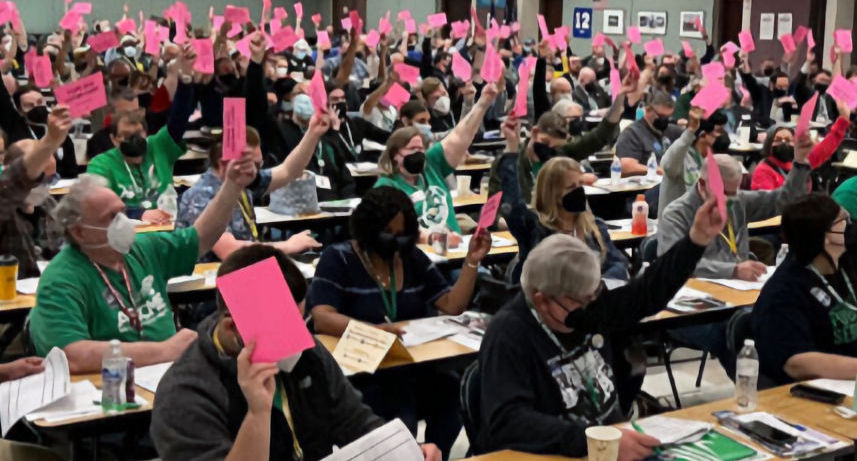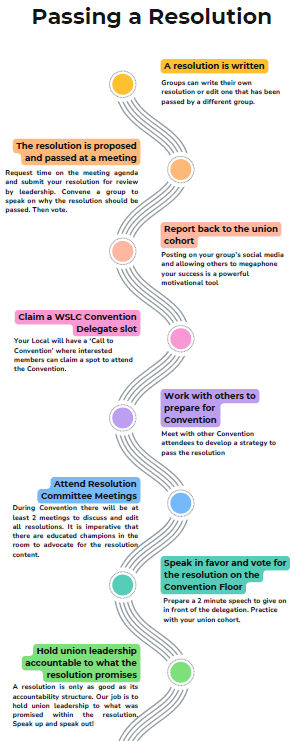
Unions and Labor organizations are democratic institutions that take direction from their members. Many unions and Labor Organizations use Conventions to receive direction on what their policies should be and the actions they should take. One of the primary ways Convention Delegates make their constituents’ voices heard is through the use of resolutions.
 Before a resolution can direct an organization, though, it must be passed by a majority of the Delegates to the Convention. There are several steps a resolution must take before it gets to that point.
Before a resolution can direct an organization, though, it must be passed by a majority of the Delegates to the Convention. There are several steps a resolution must take before it gets to that point.
After a resolution is written, it must be submitted to the Convention. An organization will often ask that these documents be submitted before the Convention’s opening session so they can be reviewed and added to the agenda. If a resolution is submitted early enough, one of the Convention’s committees may review it and suggest changes that will make it more likely to be passed by the Delegates.
Once a resolution is published and made available to Delegates, supporters of that resolution can begin talking to other Delegates about why they should support it. This can take place on the Convention floor, outside Convention business – or even before Convention! One way to gain support for a resolution is to pass it at Local union and Central Labor Council meetings prior to the main organization's Convention... that way it will go to Convention with prior support.
The committee reviewing resolutions will often have meetings during the Convention. Much of the work that moves a resolution to the Convention floor happens in these committee meetings, so it is very important that resolution writers and their supporters attend them.
When a resolution comes up on the Convention’s agenda, it will often be read to the assembled Delegates. The Convention Chair will usually then open discussion, allowing proponents the chance to speak in support of the resolution and opponents the chance to speak against it. Depending on the size of the Convention floor, speakers may be asked to speak at microphones so their arguments for and against can be heard by everyone in the room. Statements supporting and opposing a resolution will often have a time limit, so it’s important that speakers be prepared with concise and practiced statements.
Once statements for and against the resolution have been heard, the Convention Chair will usually call for a vote of the Delegates. If a majority of the Delegates vote in favor of the resolution it is adopted and the organization is expected to follow its direction.
Shepherding a resolution through this multi-step process can take a lot of work and a lot of conversation with fellow Delegates to gain support. Hearing “the resolution passes” from the Convention Chair can make all that effort worthwhile – and if the resolution doesn’t pass, that doesn’t mean its authors and supporters have failed. They’ve put their case before Convention Delegates, and those Delegates are likely to remember the issues the resolution sought to address. They may well craft their own resolution on the subject for a future Convention.
<< What Is A Resolution? | Your Resolution Has Passed - What Happens Next? >>
